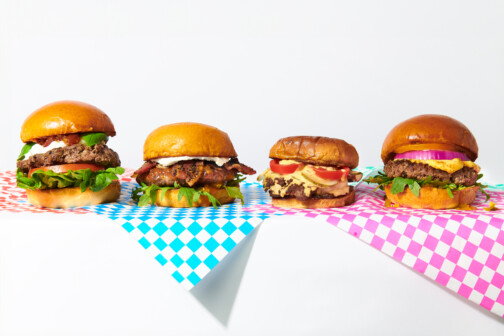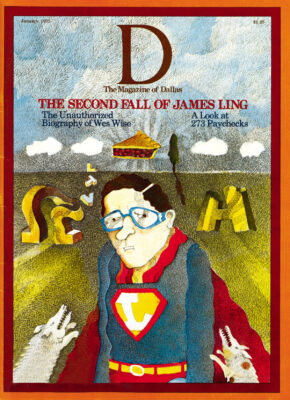Browsing the counters at the neighborhood food store brings to mind a businessman who has a sign on his wall saying, “There ain’t no free lunch.” True, how true.
Aside from migrating to the country to live off the fat of the land, there are some alternatives to buying retail meat in the see-through cellophane packages that can save you money. Look in the Yellow Pages under “Meat,” then run your finger down to “Meat Processing.” There you find the companies who will sell you a side of beef.
Checking out the advertised specials of some of these companies, we find that the average beef side weighs 300 pounds and up, and advertised price per pound ranges from 69¢to 99¢.
Here’s how it works: You select a hanging beef side and while you wait, the plant will cut it to your specifications, wrap and label each package. The packages are then frozen at the plant for later storage in the home freezer. The price includes cutting, wrapping, labeling and freezing.
To figure the true cost per pound and be sure you are getting what you want you must figure the trim loss on a particular grade of beef. Processing plants use a sensible grading system based on the yield of a beef side after trimming:
Yield 1 – Has the least trim loss but is seldom available these days.
Yield 2-About 20 per cent trim loss. Tenderized by aging.
Yield 3-About 30 per cent trim loss. Tenderized because of longer feeding.
Yields 4 & 5 – Generally less desirable and take 40 per cent and 50 per cent trim loss.
Yields 1-3 correspond to USDA cuts labeled Choice, Prime and Good.
Let’s use a recently advertised special as an example: A Yield 3 side (300 pounds) at 69¢ per pound will come to a cash price of $207. A 30 per cent trim loss will net you 210 pounds of usable meat, which gives a real cost of about 99¢ per pound. Most Yield 3 sides are priced about 85c a pound, Yield 2 sides about 99c. Remember, that’s hanging weight and figure your own from there.
Not all grades are available in a plant at any given time. You might have to wait to get what you want. Beware of bait-and-switch tactics trying to convince you to buy a Yield 4 or 5 when you want something better. Our county agent friend tells us that 98 per cent of the local meat processing businesses are honest and ethical. Knowing what you want should help you avoid the others.
Some places advertise protein (soy meal) added to their ground beef. Always ask.
While the beef side can be a bargain, the smaller package deals advertised often are not. Here’s an example: A 64 pound variety pack, which retails for $77.19, prices out to about $1.21 per pound. Here is a break-down of what is included in the package and the retail price for comparison: two chuck roasts (retail $1.09 pound, average 4 pounds); four swiss steaks (retail $1.59 pound); four seven-steaks (really a roast cut with much bone, average four pounds at retail 95c pound); eight club or rib steaks (retail $1.18 pound); 15 pounds lean chuck (retail $1.08 pound); four pounds bacon (retail 98¢ pound for slab bacon); 10 pounds fryers (retail 43¢ pound for whole fryers); eight pounds pork chops (retail ranges from 89¢ pound for loin with much fat and bone to $1.35 pound for better loin chops). You would come out ahead in this instance by selective retail buying.
Another intriguing alternative is buying beef on the hoof. (That’s right, folks, alive and kicking.) You have a choice between feed-lot beef weighing 900-1000 pounds (about 40¢ pound), or grass-fed baby beef weighing 500-600 pounds (25-30¢ pound).
Let’s be reasonable and go for the baby beef. First you find a rancher. If you don’t know one you can contact Bob Henderson in Royse City, telephone (214) 635-2608. As a spokesman for the Rockwall County Cattle Raisers Association, he can sell to you or put you in touch with other nearby cattle raisers.
Unless you plan to slaughter the critter yourself, you make arrangements for the seller to deliver the animal to an area meat packer. Most packers do not process (cut) your meat. The packer charges about $8 to kill the animal and another $5 to deliver the carcass to the processing plant of your choice.
The Wylie Locker Plant, Mesquite Locker Plant, Kaufmann Locker Plant, and the Rocking V Plant in Greenville are places that both kill and process.
Plan on losing about 40 per cent from hoof to hanging weight. Rockwall County Agricultural Extension Agent Odis Lowe says there is little price difference between buying on the hoof and buying a hanging side at a processing plant. Buying on the hoof can get you the exact size and quality you want when lockers might not be able to meet your specifications at a given time.
An average size beef side (300-400 pounds) can feed an average size family for about six months. If you eat out and vary the menu with other meats, a side could stretch to nine months. Some large families buy every three months.
Before you rush out to buy a steer, let’s do some figuring on where you’re going to store all that meat. Many processing plants rent storage space. An average cost is $36 for six months for up to 225 pounds.
Some plants offer a special price on name-brand freezers with a minimum purchase of a 300 pound side. For example: Five cubic foot freezer for $189 (retail is less on same brand at $179.95); 13 cubic foot for $279 (retail $369.95); 18 cubic foot for $310 (retail $399.95). Figure 35 pounds to the cubic foot for the size you need. A 13 cubic foot freezer is more than adequate for a side of beef plus other frozen foods.
If you already have an adequate-size freezer, bought at yesteryear’s prices, you’re ahead. If not, figure it this way: A 13-foot freezer retails for $388.45 (cash price including sales tax). With normal care, the appliance should last you at least 15-20 years. Over 15 years, then, the freezer would cost you about $25.90 per year.
Dallas Power and Light tells us it costs approximately $25 in electricity per year to run a 13 cubic foot freezer. A frost-free unit will add 30 per cent to that cost. Spending over $50 a year on storage space, you need to keep the freezer full to get your money’s worth.
That other cold spot in the home, the typical 14-18 cubic foot refrigerator-freezer is costing you about $3.25 a month in electricity. Add 25 per cent to that cost for an automatic ice-maker.
The moral to this story is that if a rich uncle gives you a freezer filled with food, there still ain’t no free lunch.
Backyard Gardening
Moving on to less weighty topics, we would all agree that man does not live by meat alone. Right? So, with our WIN buttons pinned to the front of our oldest work shirt, we will march resolutely to the back yard to survey the possibilities of our very own victory garden. We gaze wistfully across the space where we had hoped to see a luxury swimming pool next summer. Ah, well, think of the satisfaction you’re going to have in producing vegetables with your own hands.
A successful garden is highly dependent upon many decisions you will make at planting time. Carefully consider varieties that grow best in Dallas soil, (almost anything) planting dates, seeding depth, plant spacing and potential yield (most Dallas garden plots can reap two crops from two plantings each year). The size of your garden depends on available space, food preferences and your ambition. The location should be a well-drained area that gets plenty of sunlight.
If your “farmland” is already covered with that swimming pool, don’t dispair. Many vegatable plants are as decorative as they are edible and make attractive plants in existing flower beds, beneath shrubbery rows and in containers set in sunlit yard corners and patios. Even apartment dwellers can produce mini-gardens. Plants easily grown in containers include tomatoes, peppers, eggplant, onions, lettuce, spinach, cucumbers and squash.
Spring planting dates in Dallas County can begin as early as January for some crops and ranging through early May. The last frost averages about March 17.
Now is the time to begin planning that spring planting. Your best source for free and valuable information is the Agricultural Extension Service of Texas A&M University in Dallas (749-8401). They will send you detailed booklets and answer any questions you might have about planting guides, Dallas soil characteristics (black clay with much alkalinity) and how to treat it for best results, control of plant diseases and insects, watering, harvesting and more.
Another excellent source of information is the Nicholson-Hardie Seed Stores in Dallas. They print an easy-to-understand vegetable garden planting guide for Dallas County. This small folder lists every vegetable from asparagus to watermelon, giving number of seeds or plants per 100 feet, average crop per 100 feet, planting depth, distance between rows, average crop height, spring and fall planting dates for each vegetable, days to maturity and the average number of days you can expect to harvest each variety.
You will probably need to purchase a few basic tools such as shovel, hoe and rake, but the hardest work of all is breaking up the lawn (grass). This can be done with a tiller. Rental rates on a tiller run about $7 for two hours minimum or $20 per day. Look in the Yellow Pages under “Gardening (Rental)” .
A tiller can work to a depth of about 4 inches, but it’s hard work and you are still left with the problem of grass roots in your soil which can be a continuing problem.
You might want to consider hiring a landscape contractor. For about $1.45 a square foot, a contractor will cut your grass off in a layer with a side-cutter, remove the soil down to six inches, fill the area with combined sandy loam, sharp sand and peat, then till the ground and level it. Look under “Landscape” in the Yellow Pages. That’s a more costly method of getting started, but it can be a bargain if it means getting started right for the best results.
One definite way to save money and aid your garden is by starting a compost pile. This is simply decaying organic matter, rich in nitrogen and nutrients, to mix with your soil and spread on top of garden soil. Leaves, old sod, grass clippings, straw, plant refuse from your kitchen and manure can be used.
Choose an out-of-the-way spot outdoors for your compost pile. You can start a pile on the ground or build a wooden or wire bin to hold the compost. Moisture and warm weather speed up the decaying. Starting now, you could have a valuable compost pile by next summer, in time to use in fall planting. Manure and other compost material can often be obtained free from area horse stables.
The alkaline clay soil of Dallas is generally fertile but notoriously low in nitrogen and phosphorus, so a compost pile can add necessary ingredients without costing you a penny.
Don’t expect to shrink your grocerybill very much by producing all yourfresh vegetables. Your primary rewards will be freshness and flavor,fresh air, exercise and a sense of personal satisfaction. Showing off yourbig, ripe tomato crop is the latest instatus symbols! Enjoy, enjoy.
Get our weekly recap
Brings new meaning to the phrase Sunday Funday. No spam, ever.
Related Articles

Arts & Entertainment
Hamilton Returns to Dallas, and TCU Grad John Devereaux Wears Many Hats
On one night, the George Washington role is calling. And on the next, the King George role might need to be filled. When a spot opens up, it's Devereaux's time to shine.
By Brett Grega

Home & Garden
Level Up Your Poolside Party Game This Summer With Four New Burger Recipes
Find exclusive recipes from the minds behind Burger Schmurger, Liberty Burger, Parigi, and Rodeo Goat.
By Lydia Brooks

Commercial Real Estate
What’s the Key to Attracting Talent? Three Frisco Developments Offer Answers
Developers behind Frisco Station and Fields reveal detailed updates—and city officials provide a sneak peek of redevelopment plans for Frisco's downtown.


